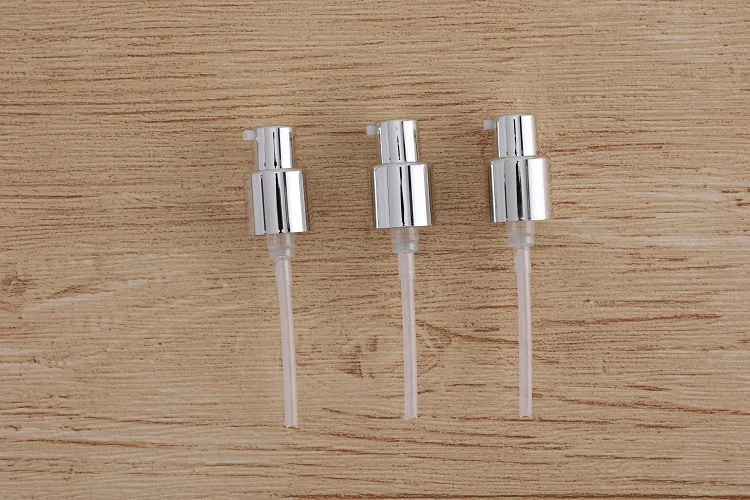Perfume spray pump technological innovation: Let you feel the beauty of fragrance better!
The perfume spray pump is one of the most important parts of the perfume bottle. It not only determines the spraying effect of the perfume but also directly affects the service life and storage effect of the perfume. With the continuous advancement of science and technology and people's continuous pursuit of perfume usage experience, the technology and innovation of perfume spray pumps are also constantly developing and improving.
The basic structure of a perfume spray pump includes a nozzle, pump body, spring, piston, sealing gasket, and other parts. When the user presses the nozzle, the piston in the pump body moves downward, compressing the spring, and causing the perfume to spray out of the nozzle. When the hand releases the nozzle, the spring will return to its original shape and the piston will move upward, causing the perfume in the pump body to be sucked back, thereby realizing the spraying of perfume.
Technical innovation of perfume spray pump
High-pressure spray technology
High-pressure spray technology is a new type of perfume spray technology that uses high-pressure gas to spray out perfume, which can achieve a more delicate and uniform spray effect and make the perfume last longer. In addition, high-pressure spray technology can better disperse the perfume molecules, making the fragrance more fresh and natural.
Airless spray technology
Airless spray technology is a new environmentally friendly spray technology that does not require the use of compressed gas but uses mechanical force to spray perfume. This technology can not only reduce environmental pollution but also better protect the ingredients of perfume, making perfume more pure and natural.
Rotary spray technology
Rotary spray technology is a new type of perfume spray technology. It uses a rotating nozzle to spray perfume, which can achieve a more even and delicate spray effect. In addition, the rotating spray technology can also spray the perfume to a wider area, making the fragrance last longer.
Nano spray technology
Nano-spray technology is a new type of perfume spray technology that uses nanotechnology to break down perfume molecules into smaller particles, which can penetrate deep into the skin and make the fragrance more lasting. In addition, nano-spray technology can better protect the ingredients of perfume, making perfume more pure and natural.
In addition, the materials and appearance designs of perfume spray pumps are also constantly innovating. Traditional metal spray pumps are gradually being replaced by lighter and more environmentally friendly plastic materials. At the same time, some spray pumps with unique designs and beautiful appearances are also favored by consumers. These innovations not only improve the practicality of the products but also inject more fashion elements.
Finally, let us look forward to the future trends of perfume spray pumps. With the continuous development of technology, we can look forward to further innovations in perfume spray pumps in terms of intelligence and personalization. Spray pumps in the future may be more intelligent and can be remotely controlled through mobile apps to customize spray frequency and measurement to meet consumers' individual needs. At the same time, as the concept of sustainable development becomes more and more popular, we can also look forward to further innovations in materials and production processes of perfume spray pumps and the launch of more environmentally friendly and sustainable products.
In general, perfume spray pump is an important part of the perfume industry, and its technology and innovation are crucial to the development of the industry. Through continuous technological innovation and product upgrading, it will bring consumers a better experience and will also promote the development of the entire perfume industry in a more intelligent, personalized, and sustainable direction. I believe that in the near future, we will see more surprising perfume spray pump products coming out.
https://www.jinbaosprayer.com/Perfume-spray-pump-technological-innovation.html
- Art
- Causes
- Crafts
- Dance
- Drinks
- Film
- Fitness
- Food
- Игры
- Gardening
- Health
- Главная
- Literature
- Music
- Networking
- Другое
- Party
- Religion
- Shopping
- Sports
- Theater
- Wellness



